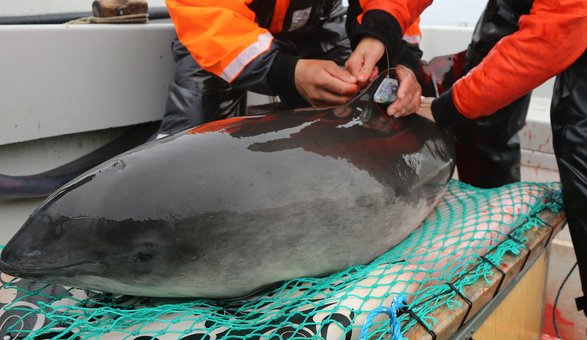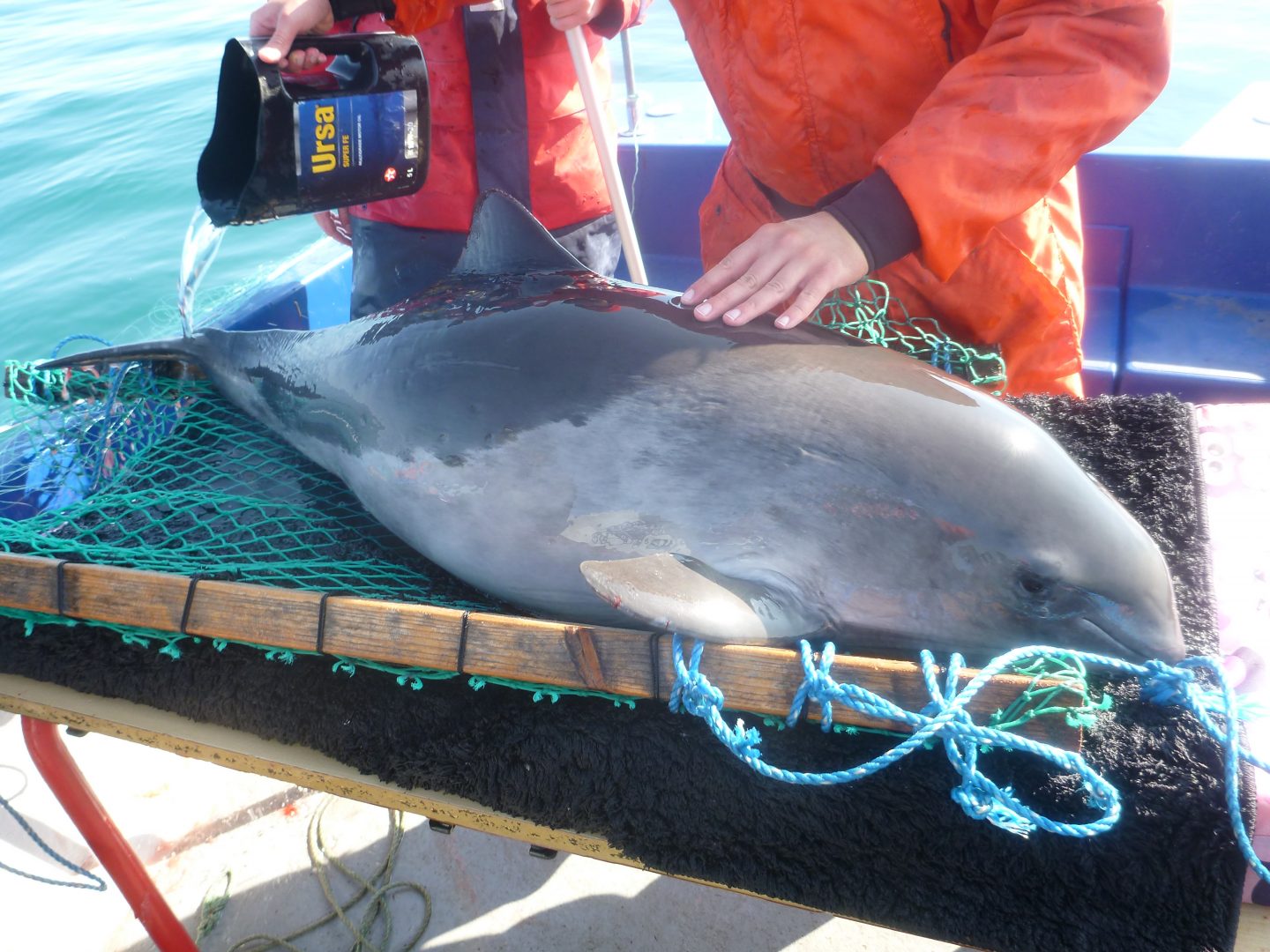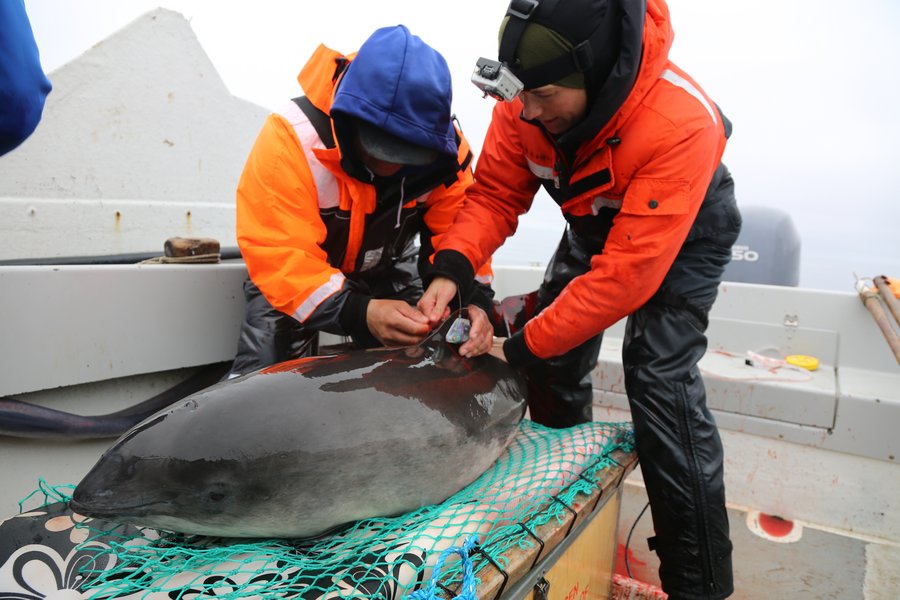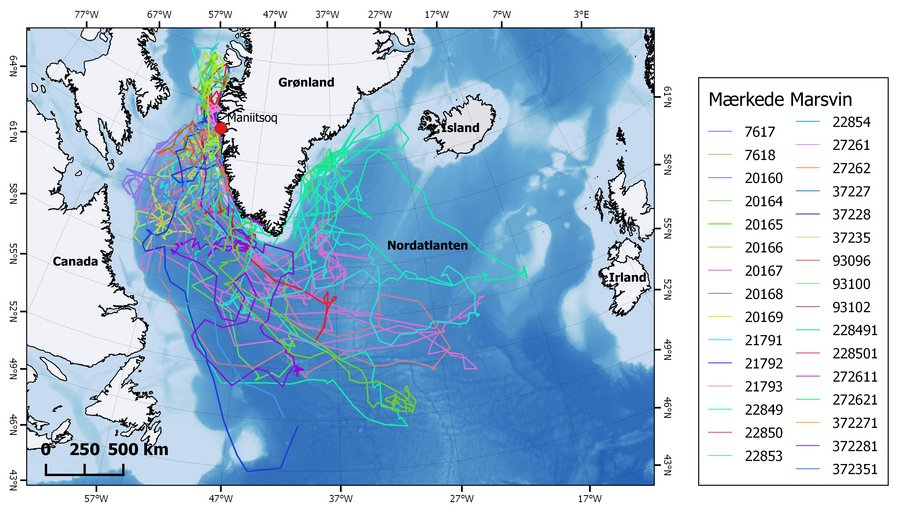Greenland porpoises touring the North Atlantic Published 24.08.2018

New research shows that these small, tough whales swim much further away from the shore and dive far deeper into the open sea than previously believed.
By Peter Bondo
We often only see this small, fast whale – the porpoise – for a brief moment, when it breaks the water surface with its characteristically sounding breath, which most of all resembles a sneeze.
And when winter freezes the West Greenland coastal waters, the Greenland porpoises are forced to swim out to ice-free areas. However, at the same time, they are dependent on the ability to find the fish and squids they feed on.
Previously, the porpoises were thought to stay at the edge of the ice – just a little further offshore than during summer. However, new research now shows that the porpoises set out on a long voyage during winter to find food.

A porpoise ready to be tagged is constantly being sprinkled with seawater to make it feel safe and to keep its skin moist. The porpoise is being ‘nursed’ on two regular changing pads – they fit just right for a porpoise. (Photo: Nynne E. Lemming, the Greenland Institute Of Natural Resources)
A 10,000-kilometre journey
“Together with local skilled hunters, we fitted a small satellite transmitter on 30 porpoises at Maniitsoq on the west coast of Greenland. This allowed us to monitor their movements around the North Atlantic,” says Nynne Elmelund Lemming, PhD Fellow and in charge of the groundbreaking investigations.
During summer, porpoises mate and give birth to pups close to the shore along the West Greenland coast. But when winter subsides, they swim out into the open sea.
“Our measurements showed that they can easily swim more than 10,000 km before surprisingly returning to the place where they were tagged the year before,” says Nynne Elmelund Lemming.
During their long migrations, porpoises can move up to 2,500 km from their place of tagging and swim around in areas with water depths of 2,000-3,000 metres.
“In the North Atlantic, food is hard to find, and therefore the porpoises have to swim faster and ‘migrate’ considerably longer to find their prey. Our measurements show that they dive as deep as 400 metres, thereby exploiting a large part of the water column to find food,” says Nynne Elmelund Lemming.

A researcher and a hunter are working together on fitting a satellite transmitter onto the fin of a porpoise in West Greenland. (Photo: Nynne E. Lemming, the Greenland Institute Of Natural Resources)
The project is a collaboration between the Greenland Institute of Natural Resources in Nuuk and the Department of Bioscience at Aarhus University.
Excellent ability to adapt
Compared with porpoises on the more southern latitudes, the Greenland porpoise has adapted to a much tougher environment.
“Our studies also show that the small toothed whales are extremely good at adapting to the changing environment in West Greenland,” says Nynne Elmelund Lemming.
The study has provided novel and unique knowledge of porpoise activities, and shows that the Greenland porpoise is even more adaptable than previously believed.

The figure shows how far the 30 tagged porpoises migrate. The animals have been caught and tagged with satellite transmitters in Maniitsoq, West Greenland. The porpoises swam far longer than previously known. (Figure: Nynne E. Lemming, the Greenland Institute Of Natural Resources)
“This is good news for the population of porpoises in Greenland waters. Their ability to move over large distances increases their chances of surviving the changes that are likely to happen to their food as a result of climate change,” concludes Nynne Elmelund Lemming.
Further information:
Nynne Elmelund Lemming, PhD Fellow, tel.: +45 3283 3892; email: nel@ghsdk.dk
Read the international article about the research findings in ‘Marine Ecology Progress Series‘.

